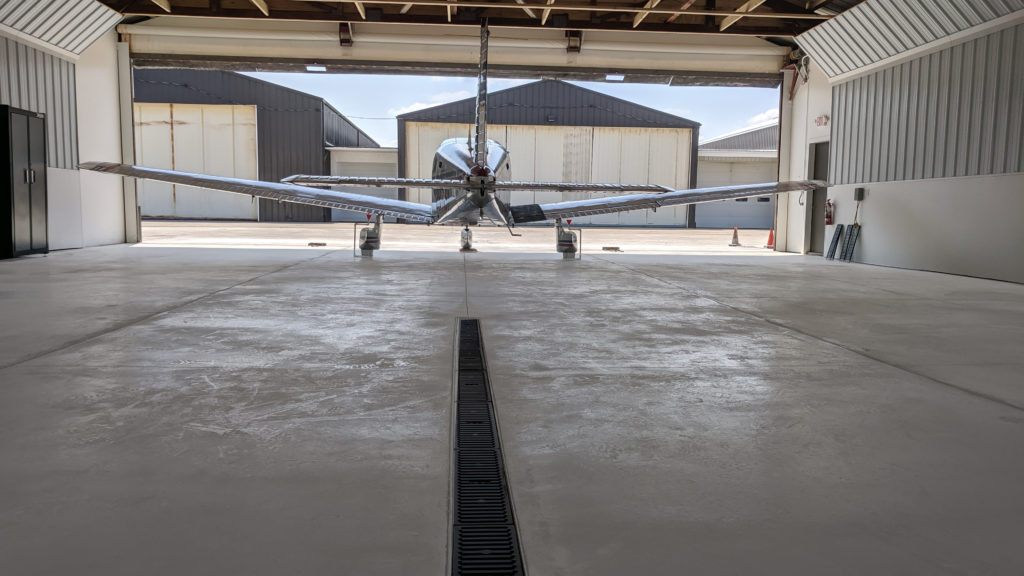The above-ground airport facilities are easy to appreciate, such as the runways, control towers, terminals, and of course, airplanes. What’s underground tends to go less noticed and under-appreciated. Beneath, inside, and surrounding airport facilities are drainage systems designed to collect, carry and dispense stormwater runoff. Drainage systems collect stormwater runoff from paved surfaces. The drains carry the runoff along and through the adjacent areas, dispensing it to an adequate receiving area without causing adverse effects such as flooding. Similar to street and highway drainage, airports have large areas of relatively flat gradient which require the prompt removal of surface and subsurface water.
Whether it is a private, county, municipal, or international airport, military airbase or heliport, there are numerous places that drains are essential to their successful operation. Without proper drainage, accumulating water can cause issues concerning safety, efficiency, and expense.
| Interior Airport Drains | Exterior Airport Drains | |
| – Hangars | – Runways | |
| – Maintenance bays | – Taxiways | |
| – Storage bays | – Aprons | |
| – Terminals | – Fueling areas | |
| – Control towers | – Parking lots | |
| – Restrooms | – Access roads | |
| – Kitchens | – Bridges | |
| – Shower facilities | – Pedestrian walkways | |
| – Doorways | – Aircraft parking stands | |
| – Emergency services | – Emergency services | |
| – Pedestrian tunnels/walkways | – De-icing areas | |
| – Hangar overhead doors | ||
| – Cargo bays | ||
| – Doorways | ||
| – Bus stops | ||
| – Taxi stands |
While drainage aesthetics is a factor considered among public facilities, safety and efficiency are two necessities for all airports. Proper drainage is imperative to redirect water that may hinder any activity necessary for the safety and efficient operation of the airport. Natural drainage usually does not meet these requirements. All surface flow should be away from the pavement and not directed across them.
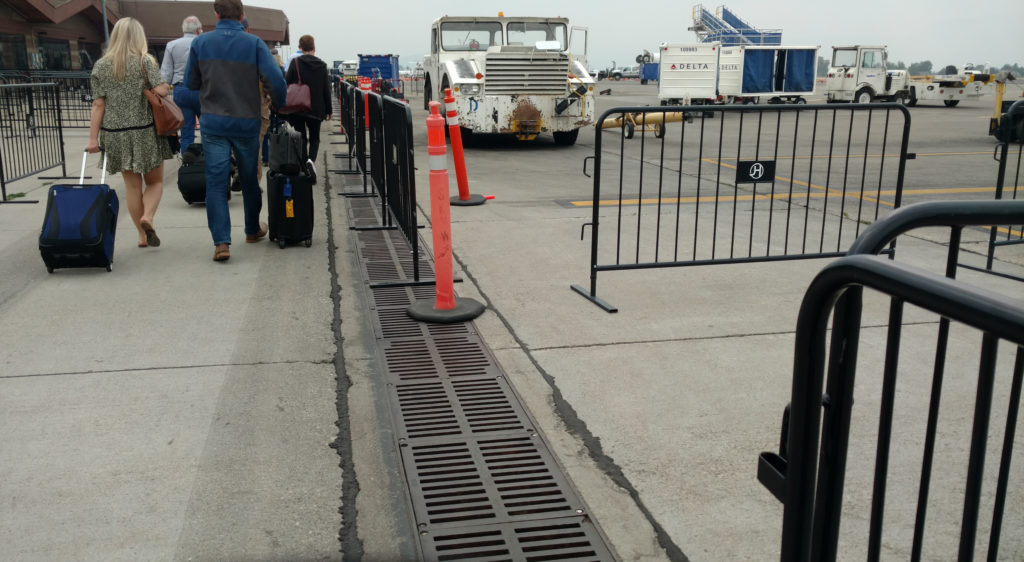
SAFETY
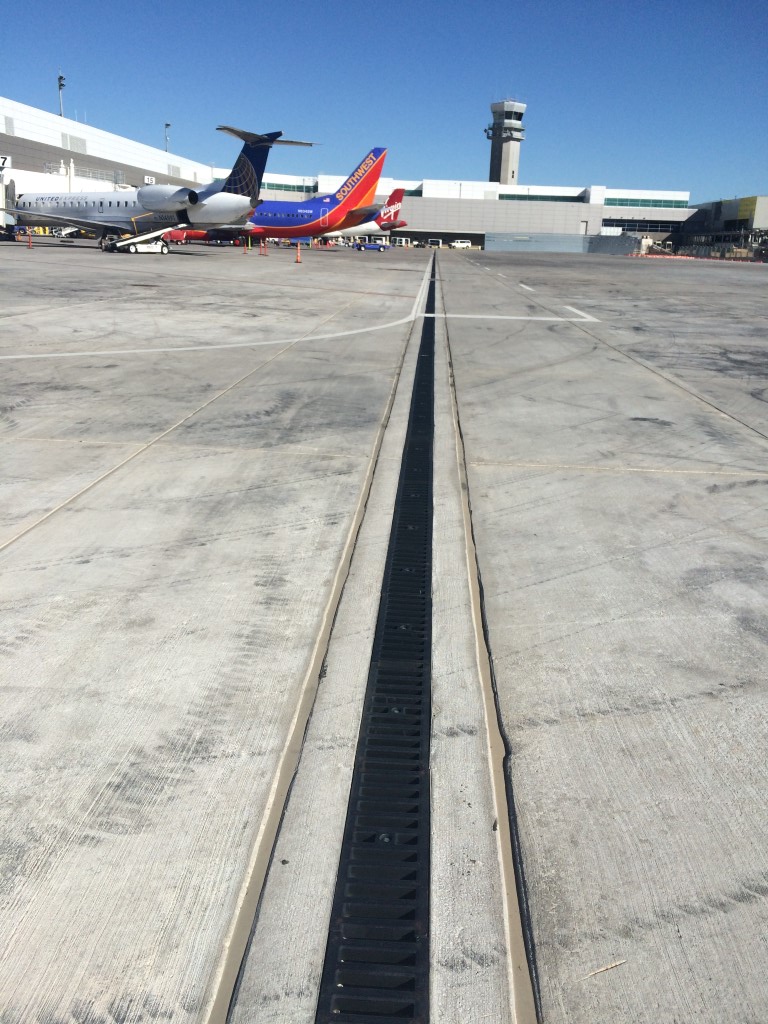
Traffic safety, whether vehicular or pedestrian, is directly related to surface drainage. The buildup of water causes hydroplaning which can result in serious accidents from aircraft losing steering and brake control. Stormwater collection systems must provide adequate surface drainage for safe passage of vehicles and operation of the facility during rainfall. The drain dimensions and grate open areas must provide the capacity to handle the projected maximum expected water flow.
Drain grates must be suited for frequent and extreme stress due to traffic weight and frequency at airports. Grates are available in load class A through F, depending upon the traffic load it will need to endure, to ensure proper load bearing, stability and longevity. High load demand of aircraft and other vehicles calls for a high capacity, heavy duty, load class F grate made of cast iron, steel or ductile iron. Airport trench drains generally require a bolting mechanism to stay secure. Such grate locking devices ensure that the grates don’t shift or get sucked up into the airplane engines and cause detrimental consequences.
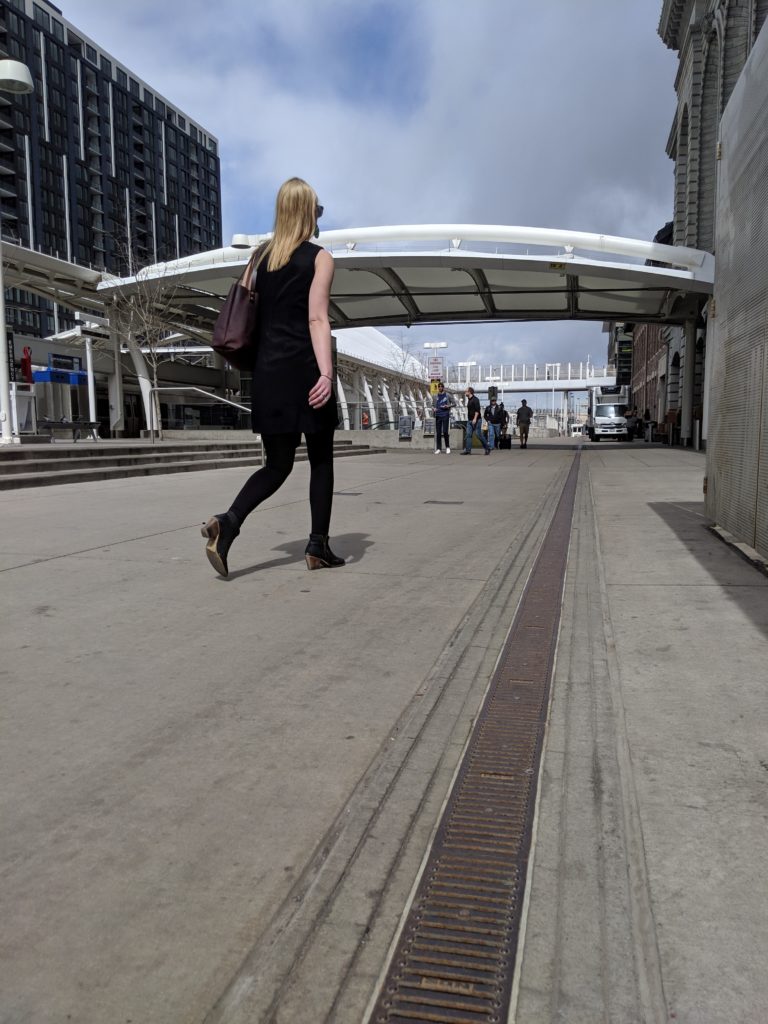
Removable drain covers or catch basins are placed at changes in pipe grades, sizes, directions and junctures of drain runs. This allows for easy access for inspection and clean-out, preventing flooding caused by solid debris or damage within the drainage system.
Pedestrian areas should have grates that are ADA compliant and heel friendly, so the drain cover doesn’t pose a danger. There are many material options for drain grates in pedestrian areas such as plastic, iron, steel and bronze. Grates are also available with a non-slip design or texture. Numerous grates are available with decorative designs that serve as an aesthetic accent to integrate well with public spaces, while simultaneously meeting the needs of safety and functionality.
Drain grates must be flush to the surface to prevent the grates from getting lifted by passing traffic and creating tripping hazards. Grate locking devices, such as locking bars, bolts and hooks, are a proven effective method to hold grates securely in place for pedestrians.
EFFICIENCY
Airports of all sizes face demanding drainage challenges dependent upon the facility design. Installing a drainage system with the anticipation of facility growth allows room for easy expansion. This results in lower construction costs and downtime compared to demolition and reconstruction.
The construction of airports has been known to change local weather patterns. For example, since airports often require large areas to be flattened out, trees and grass are generally replaced with pavement. This may change drainage patterns in agricultural areas, leading to more flooding, run-off, and erosion in the surrounding land. A contour map of the airport and adjacent areas including the layout of runways, taxiways, and aprons is very beneficial in designing the optimal drainage system.
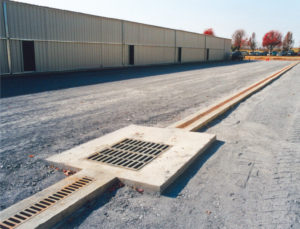
PROPER DRAINAGE PROVIDES:
- Operational safety
- Operational efficiency
- Pavement durability
- Pedestrian safety
- Waterfowl hazard management
INADEQUATE DRAINAGE CREATES:
- Costly damage from flooding
- Hazard to air traffic
- Hydroplaning
- Waterfowl hazard due to standing water
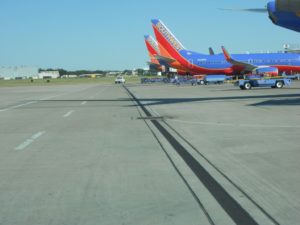
Trench drain often goes unnoticed and under-appreciated - Erosion of slopes
- Saturated/weakened pavement foundations
- Loss of pavement load-bearing capacity
- Pedestrian obstacles
Airports require drains manufactured of corrosion resistant, durable materials to withstand harsh conditions and heavy traffic. This extends the longevity and overall cost-effectiveness of the drains without compromising the safety or efficiency.
One available option for airport applications is the 3000 Series™ by Trench Drain Systems. This high volume system allows up to 3,000 gallons per minute (GPM). Made from pultruded chemically resistant fiberglass, the channels are pre-sloped and include a steel frame for durability. The lightweight channels allow for quick installation and outlet adapters provide easy connection to standard 8” PVC piping. There are various grate options to meet Class B – F load ratings. Grate lockdown devices and catch basins are available to complete this efficient and dependable system.
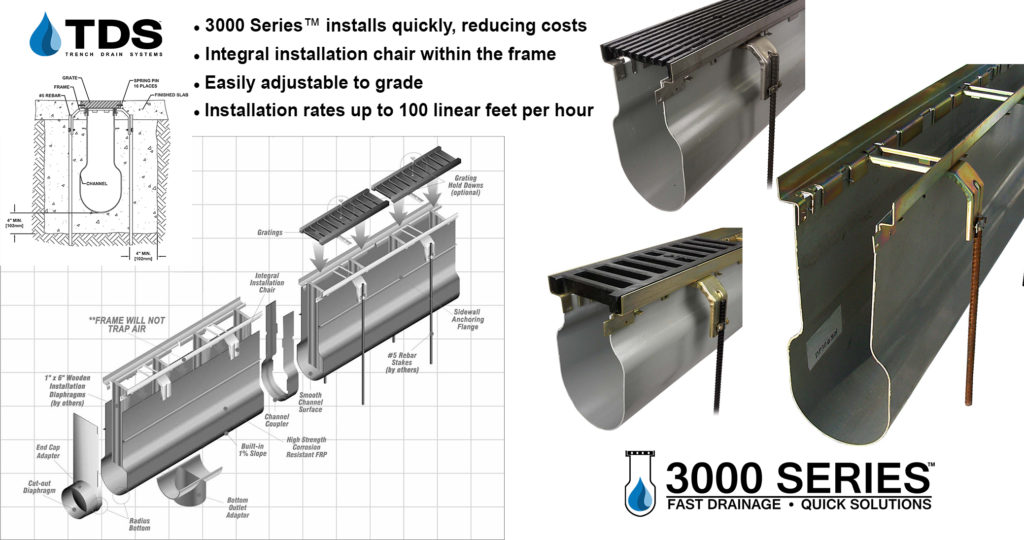
Trench Drain Systems is a national distributor and manufacturer of linear drainage products. Many products are available for purchase on-line. Visit DrainageKits.com to view drainage solutions as kits that contain channels, grates and accessories. Looking for replacement grates? Visit TrenchDrainGrates.com for numerous replacement grate options.
For assistance in designing or specifying a drainage product, let the professionals at Trench Drain Systems help. Our engineering department can assist with layouts and submittal packages. Call our experts at 610-638-1221, email [email protected], or CLICK HERE to request a free quote. Visit TrenchDrain.com for more information.

